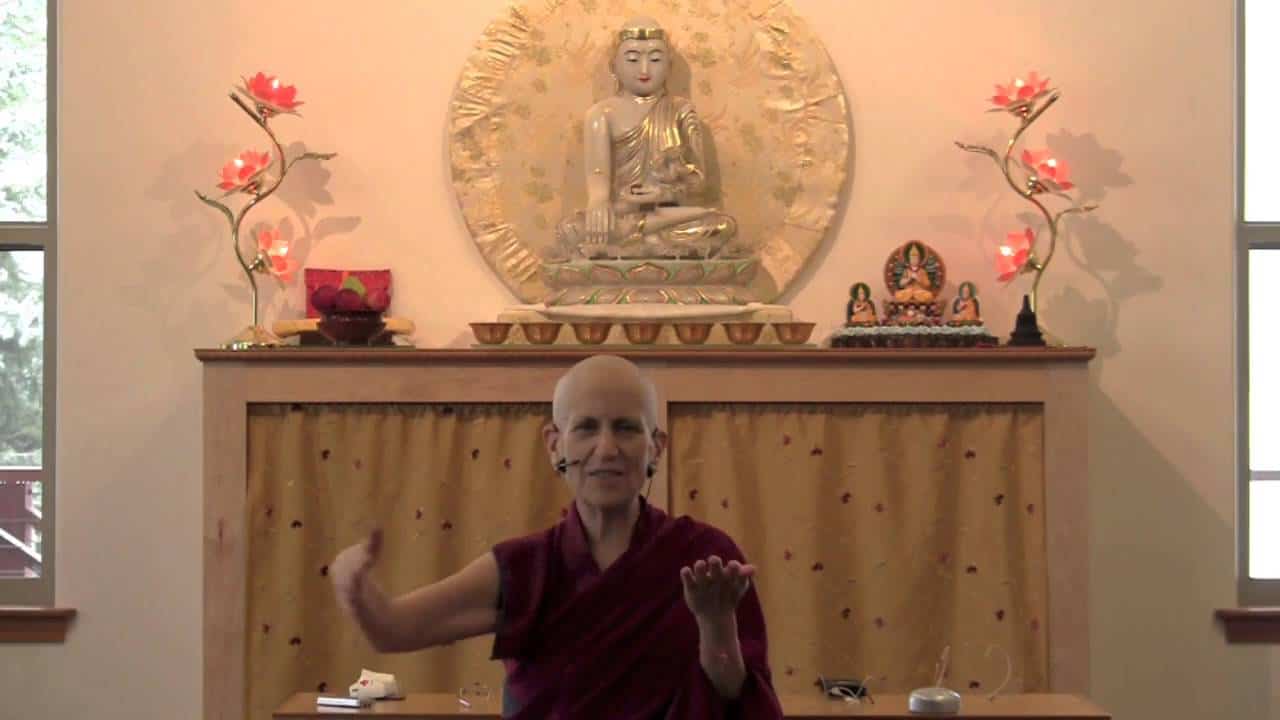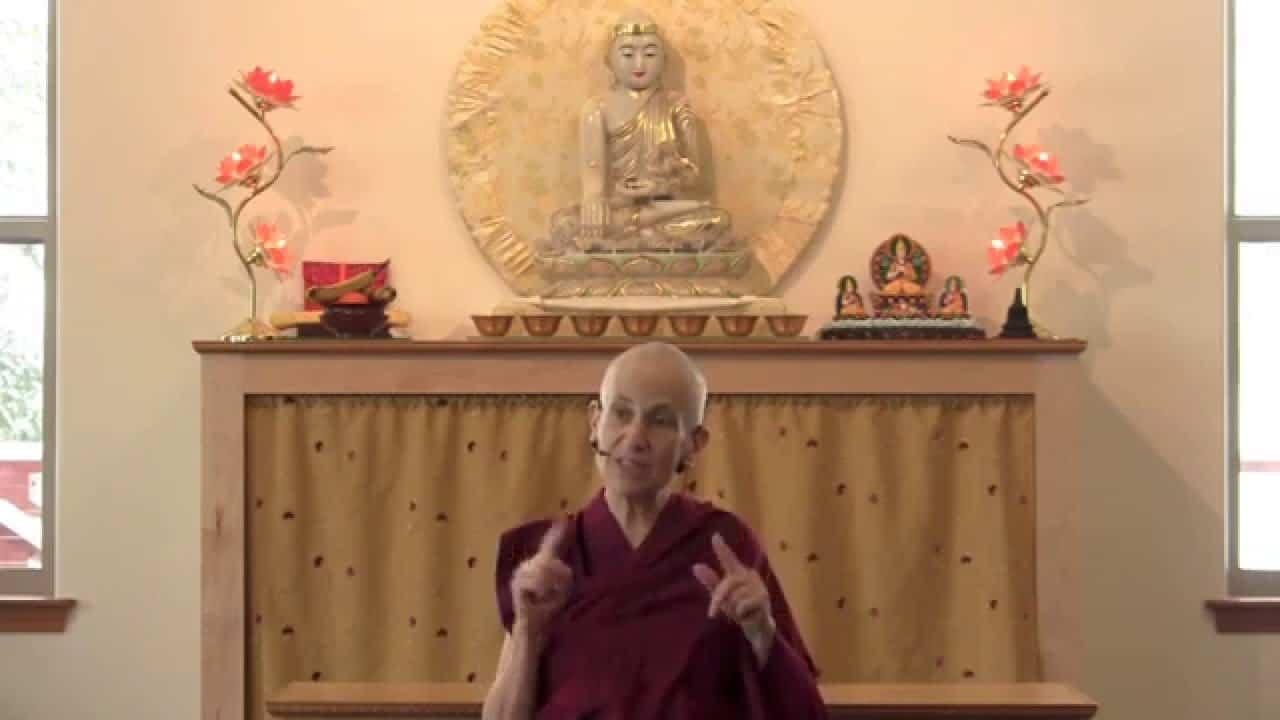The best discipline
Part of a series of teachings on a set of verses from the text Wisdom of the Kadam Masters.
- “Faith” in a Buddhist context
- Putting effort into taming the mind
- Effort, pushing, and relaxation
Wisdom of the Kadam Masters: The best discipline (download)
The next line is,
The best discipline is taming your mindstream.
There’s not much more to say after that. That’s the essence of the whole practice, taming our mindstream.
As you’re doing the refuge practice right now what you want to aim for is a deepening of your wisdom and your compassion. The purpose of the practice isn’t just to generate a lot of emotional faith, but it’s to really understand the Buddha, Dharma, and Sangha, what they are, what our relationship is with them, and then the faith will naturally come and the inspiration to practice will naturally come from that.
We’re not sitting there trying to go, “I’ve got to make myself have faith.” That’s not going to work. But if you really think about the qualities of the Buddha, Dharma, Sangha, and then you think, “I have the possibility to develop those same qualities…” The Buddha wasn’t always a buddha primordially, but was just like me, but he practiced, and I just kept playing poker, or exercising my thumbs. He created the cause, and I didn’t, but we have the same potential, I can also attain buddhahood. So think, what did the Buddha practice? The two key elements of course are wisdom and compassion. And both of them we practice based on a determination to be free from cyclic existence. There you have the three principal aspects of the path. You see how they fit into your practice of refuge.
In terms of taming your mind, we really have to put some effort into it. That’s important. It’s not going to happen by just (wishing): “Well, gee, I wish my mind would get tamed.” Or, “Buddha, buddha, buddha please make my mind get calm.” Or, “When are the scientists going to develop the pill that will give me samadhi?” This is going to come about through making effort ourselves.
Making effort is different from pushing ourselves. This is quite important. I remember once I went to a Montessori school and we were showing the kids how to meditate, and there was a little girl in the front row (squeezing eyes shut). That’s not making effort. That’s having a tight mind. That’s trying too hard. That’s pushing yourself. There definitely has to be an element of self-acceptance in this, a certain degree of mental relaxation, but also a mind that stays on track.
Relaxation does not mean (falling asleep), and staying on track doesn’t mean you’re galloping a horse. You want the middle way, somehow, between those, where you are consistent in doing your practice, and there’s self-acceptance, but you also keep trying, and you keep going deeper. That’s a very important element of this whole thing.
Venerable Thubten Chodron
Venerable Chodron emphasizes the practical application of Buddha’s teachings in our daily lives and is especially skilled at explaining them in ways easily understood and practiced by Westerners. She is well known for her warm, humorous, and lucid teachings. She was ordained as a Buddhist nun in 1977 by Kyabje Ling Rinpoche in Dharamsala, India, and in 1986 she received bhikshuni (full) ordination in Taiwan. Read her full bio.


